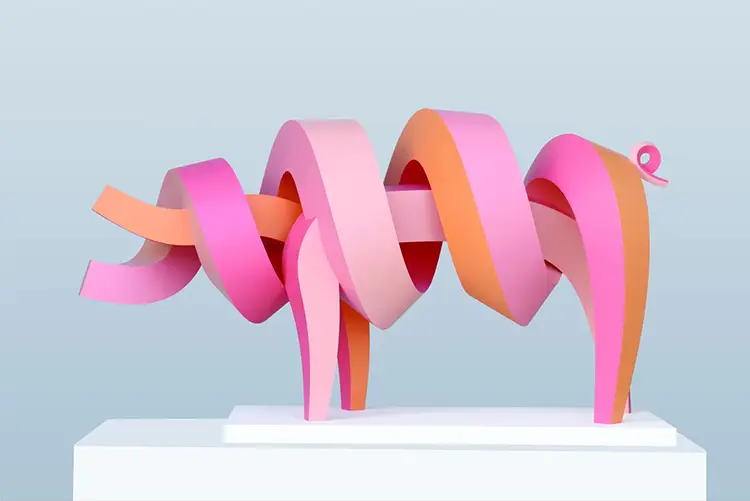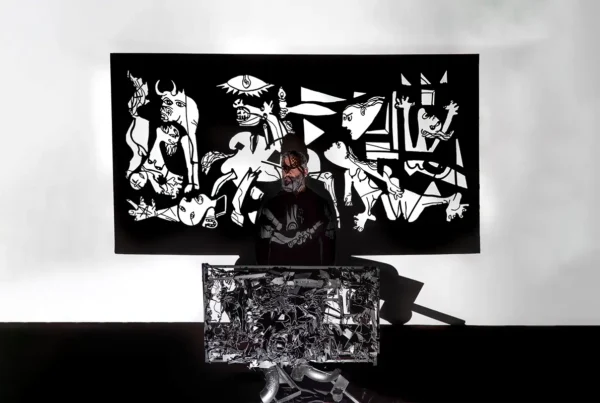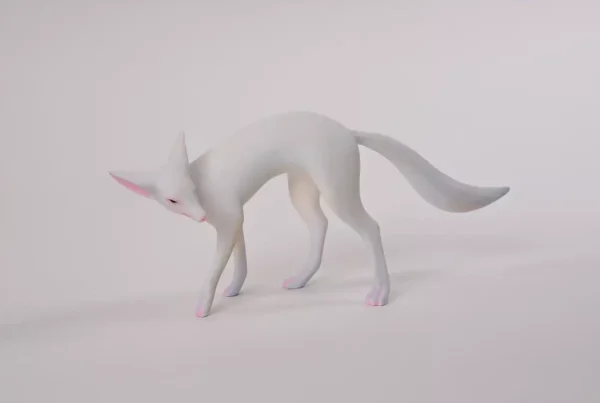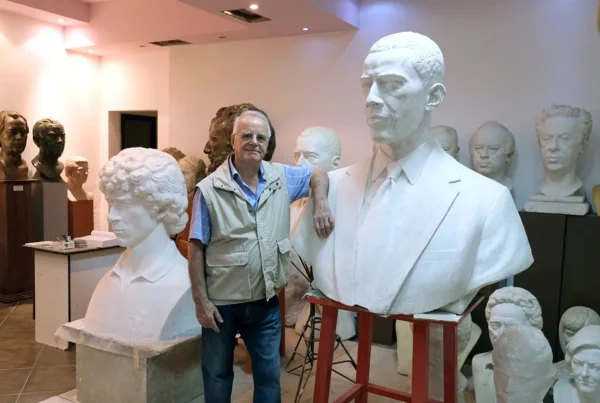Sculpting Simplicity with Precision
From his early fascination with drawing to becoming a standout figure in contemporary sculpture, Lee Sangsoo has built a distinct artistic identity by transforming fluid lines into tangible form. His practice revolves around the concept of “drawing in the air,” creating animal sculptures that are both minimal and profoundly expressive. Rather than relying on heavy mass or intricate surface detail, his works suggest movement and emotion through flowing curves that seem to float in space. This unique visual language has earned Lee international recognition, not only for his aesthetic vision but also for his seamless blend of traditional craft and digital innovation.
His sculptures capture more than just form—they embody the spirit of the creatures they represent. With a background rooted in classical sculpture training from Dong-A University and a Master’s degree from Hongik University, Lee began his journey deeply engaged in academic study. However, immersion in formal technique eventually clouded his creative drive, as the pressure to produce “original” work began to replace his initial joy. It was only by stepping back and reconnecting with the simple pleasure of sketching that he found clarity again. In doing so, he reoriented his work around intuition rather than expectation, a shift that ultimately redefined his creative path.
By transforming simplified animal line drawings into sculptural pieces, Lee’s work invites viewers to reconsider the boundaries of drawing and sculpture. His forms appear weightless yet grounded, playful yet deliberate. Each piece is a balancing act between clarity and abstraction, simultaneously accessible and open to deeper interpretation. Whether small resin models or large-scale stainless steel installations, his sculptures engage viewers with their elegance, curiosity, and quiet sophistication.
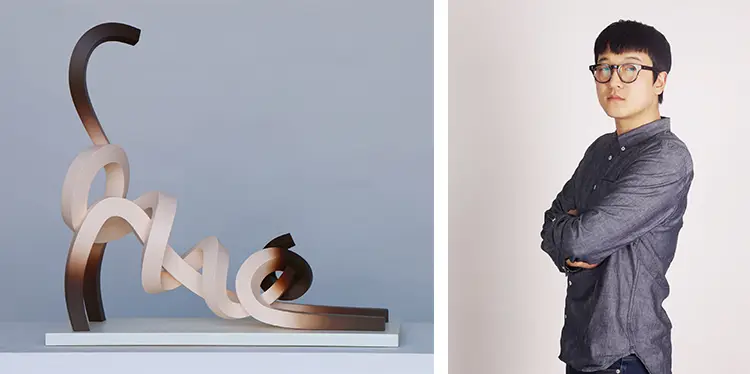
Lee Sangsoo: Rediscovering Joy through Gesture
During his formal education, Lee Sangsoo experienced a creative impasse—one familiar to many artists navigating the expectations of academic and professional life. What began as a childhood love for drawing slowly transformed into a burdensome pursuit of artistic novelty. The drive to stand out, to create something entirely unseen, eclipsed the joy that first led him to art. Feeling lost, Lee questioned not only the purpose behind his practice but also whether he had strayed too far from the essence of why he created in the first place. This internal struggle became a pivotal point in his career.
Rather than abandoning his path, Lee returned to the foundation of his creativity—his sketchbooks. There, among spontaneous lines and loose gestures, he began to rediscover a sense of freedom. Inspired by the expressive minimalism of Picasso’s animal drawings, Lee saw an opportunity to build a sculptural language rooted in fluid motion rather than rigid form. This period marked the birth of his “drawing in the air” concept—an approach that marries the spontaneity of line art with the spatial complexity of sculpture. With this reawakening, he not only regained his creative momentum but also unearthed a signature style that has since become central to his work.
Animals emerged as his primary subjects, not out of convenience but because they embodied the movement and emotion he sought to convey. Each species, with its own behavioral rhythm and visual character, became a muse. By paring down their forms to essential curves, Lee aimed not to replicate their anatomy but to evoke their energy. This minimal yet intentional reduction allows his sculptures to feel both universal and specific—recognizable from afar yet revealing new dimensions upon closer inspection. Through this, he crafts a visual language that celebrates the vitality of nature while staying rooted in human gesture.
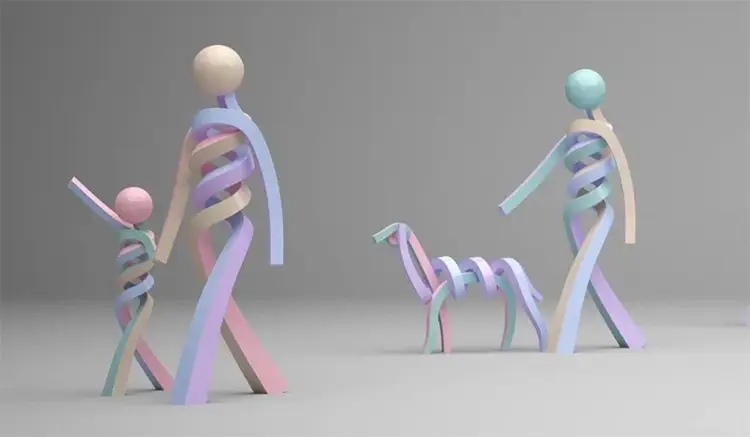
The Digital Hand and the Physical Curve
Lee Sangsoo’s practice is as much about technological process as it is about artistic expression. While the conceptual seed of each sculpture begins with hand-drawn sketches, the translation from page to physical space involves a series of digital steps that enable Lee to test and refine his ideas. Using 3D modeling software, he creates virtual versions of his sculptures, carefully adjusting the balance, weight, and curvature of each line. This stage is crucial in allowing the artist to visualize how a flowing line will function structurally, ensuring that the final piece maintains both its elegance and physical integrity.
Once satisfied with the digital model, Lee brings the work into the physical world. For smaller-scale pieces, he often employs 3D-printed resin, using technology to capture the intricate curves and line continuity with precision. In contrast, his larger public installations are fabricated from stainless steel, a medium that offers both strength and a clean, reflective surface. These monumental sculptures are shaped by hand—cut, bent, welded, and painted—combining digital accuracy with artisanal craftsmanship. The interplay between technology and handwork defines Lee’s output, merging future-facing tools with timeless techniques.
Color, once an uncertain element in Lee’s visual vocabulary, has become a vital part of his sculptural identity. Initially more focused on form, he realized that adding color could breathe life into his creations, animating their surfaces and enhancing their emotional tone. Drawing inspiration from natural animal hues and environments, he developed a palette that ranges from soft pastels to vivid gradients. These chromatic choices do more than decorate—they underscore the character of each animal and the overall atmosphere of the work. The result is a multisensory experience, where shape and color intertwine to evoke a sense of presence and personality.
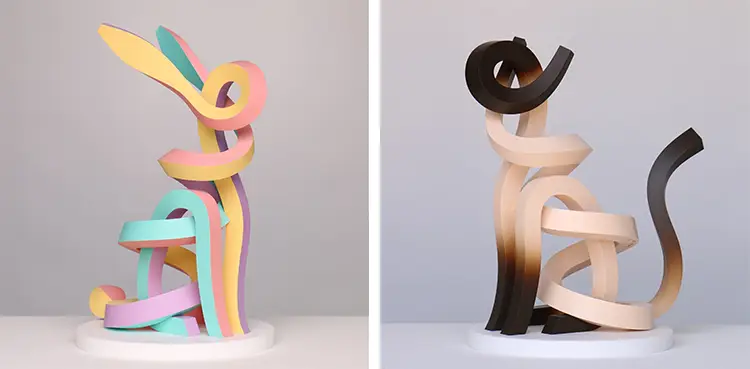
Lee Sangsoo: Shaping Space with Emotion
For Lee Sangsoo, the space his sculptures inhabit is just as important as the lines that define them. By crafting works that appear suspended in motion, he invites viewers to navigate around them, discovering new angles and rhythms with each step. The idea of “drawing in the air” is not just metaphorical—it describes how his pieces animate the space they occupy. Rather than carving out a solid form, Lee orchestrates an experience of movement frozen in time, encouraging a dynamic interaction between the viewer and the work.
This approachability is no accident. Lee aims to create art that communicates directly, bypassing the barriers of jargon or academic context. Animals serve as an ideal conduit for this kind of interaction—they are universally understood and emotionally resonant. His sculptures evoke a sense of playfulness and warmth, prompting spontaneous engagement rather than detached observation. Yet beneath their simple lines lies a complexity that rewards closer examination. Viewers can see not only the contours of an animal, but also the decisions, tensions, and subtleties woven into each curve.
Lee’s interest in the boundary between virtual and physical space adds another layer to his creative ethos. In a world increasingly shaped by digital media, he finds excitement in the moment when an idea moves from intangible model to tangible object. His sculptures exist simultaneously in both domains, with many viewers encountering them online before ever seeing them in person. Despite this duality, his priority remains unchanged: to elicit a real emotional response. Whether rendered in resin, steel, or pixels, Lee’s work centers on the universal human desire to connect—with nature, with movement, and with meaning.
